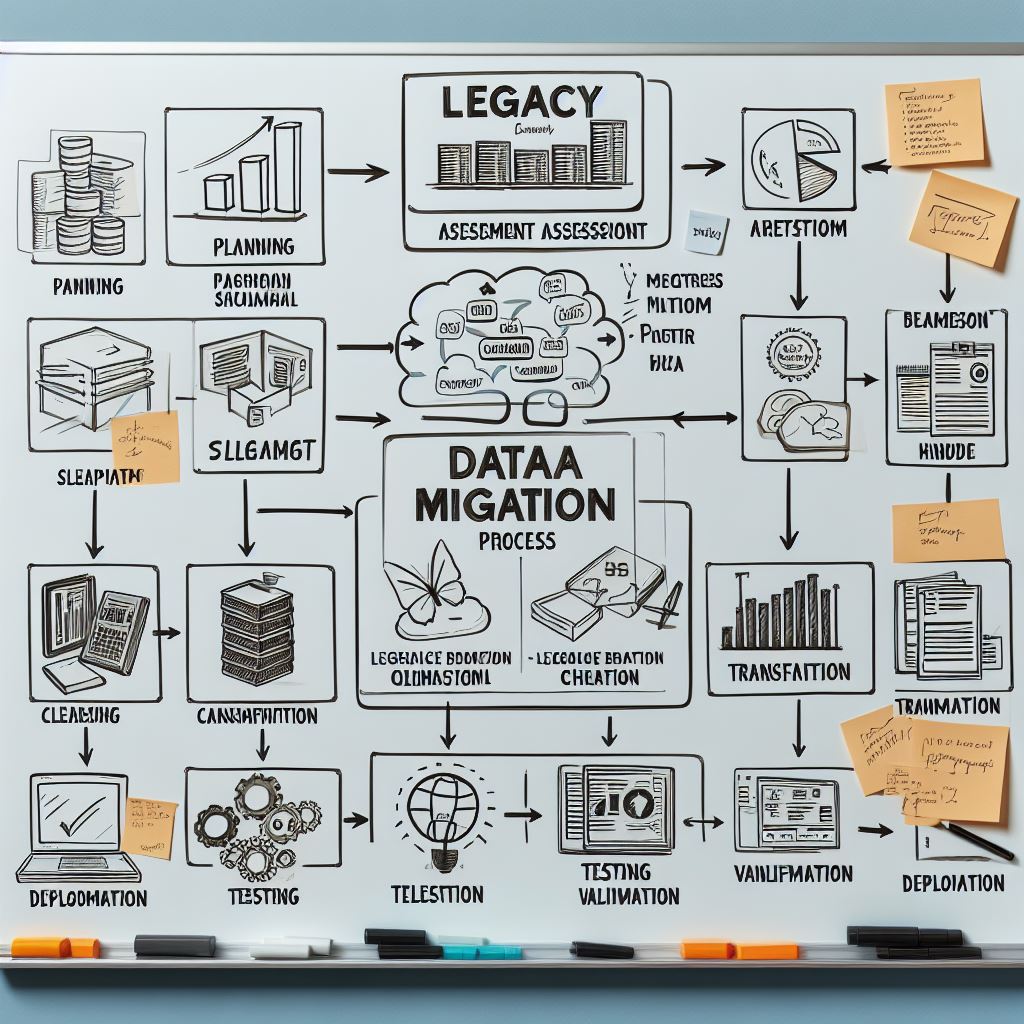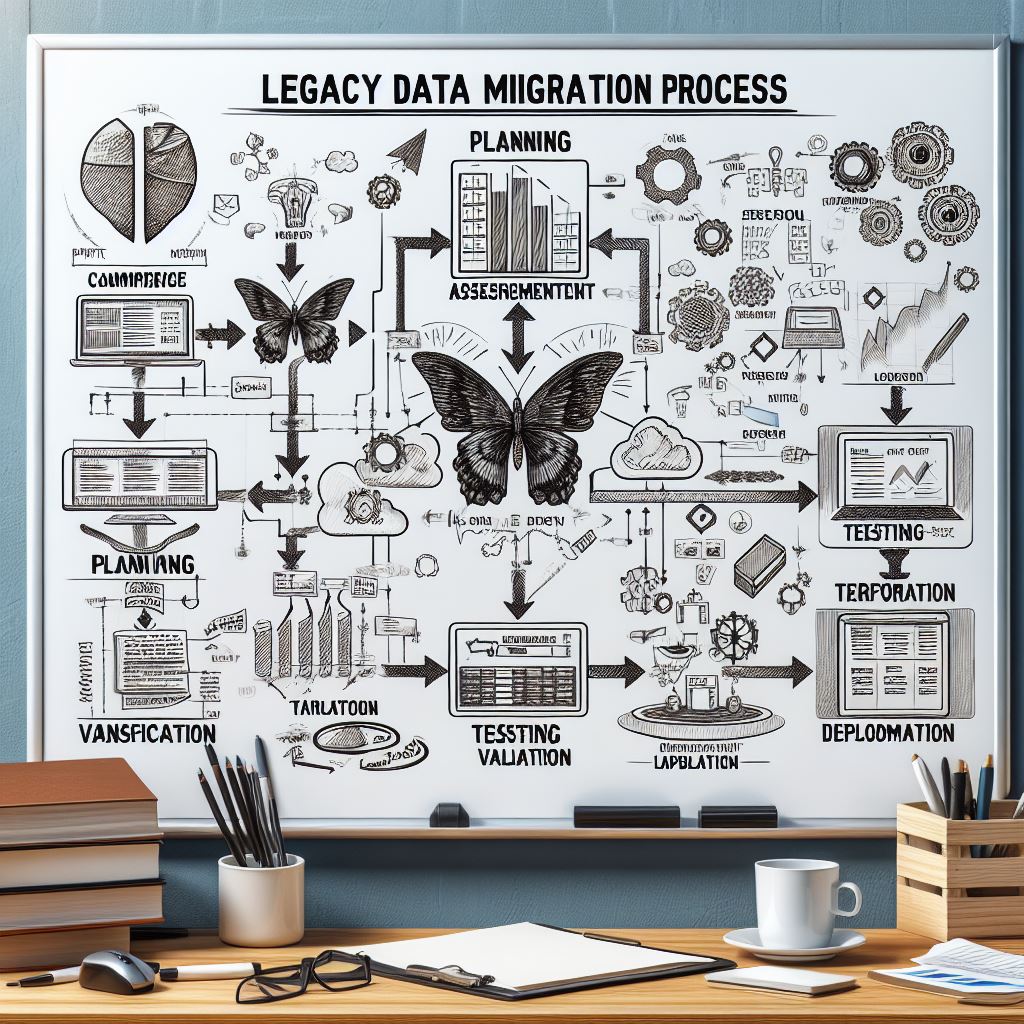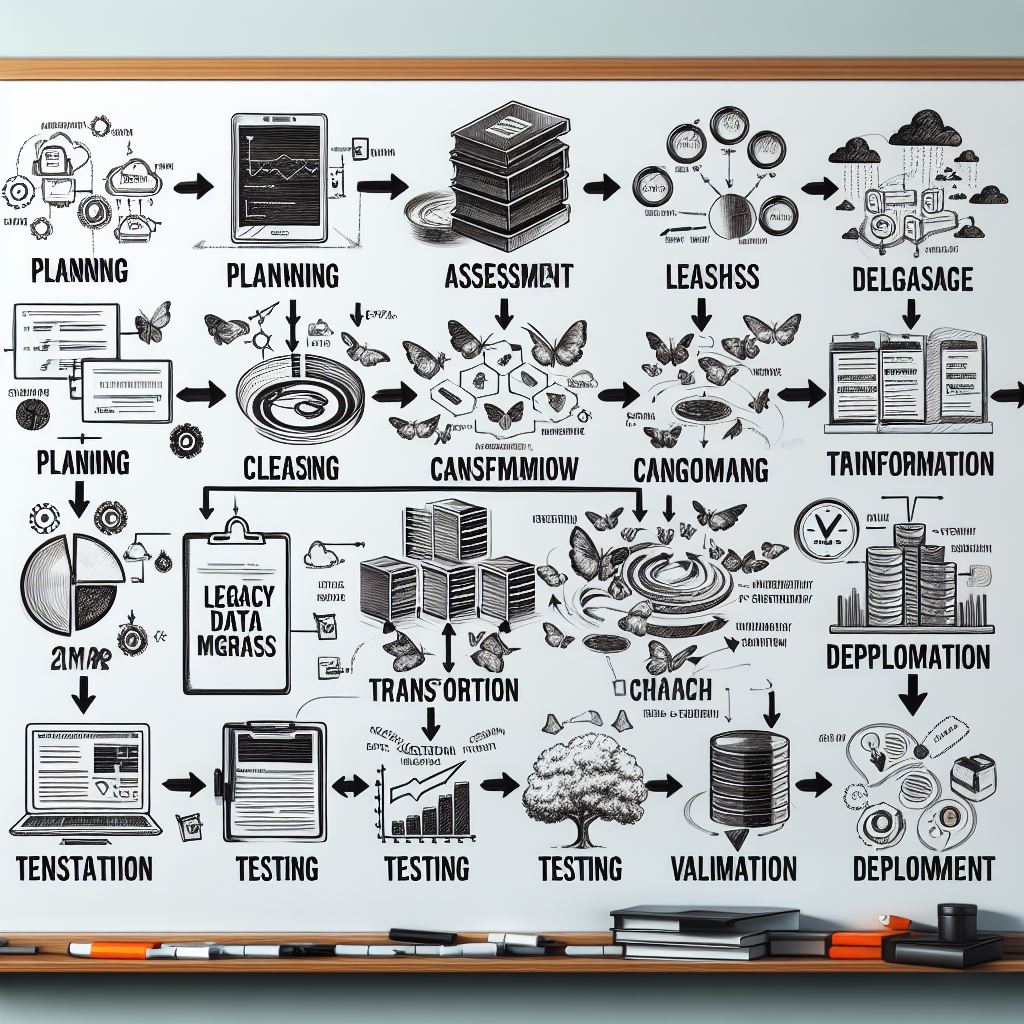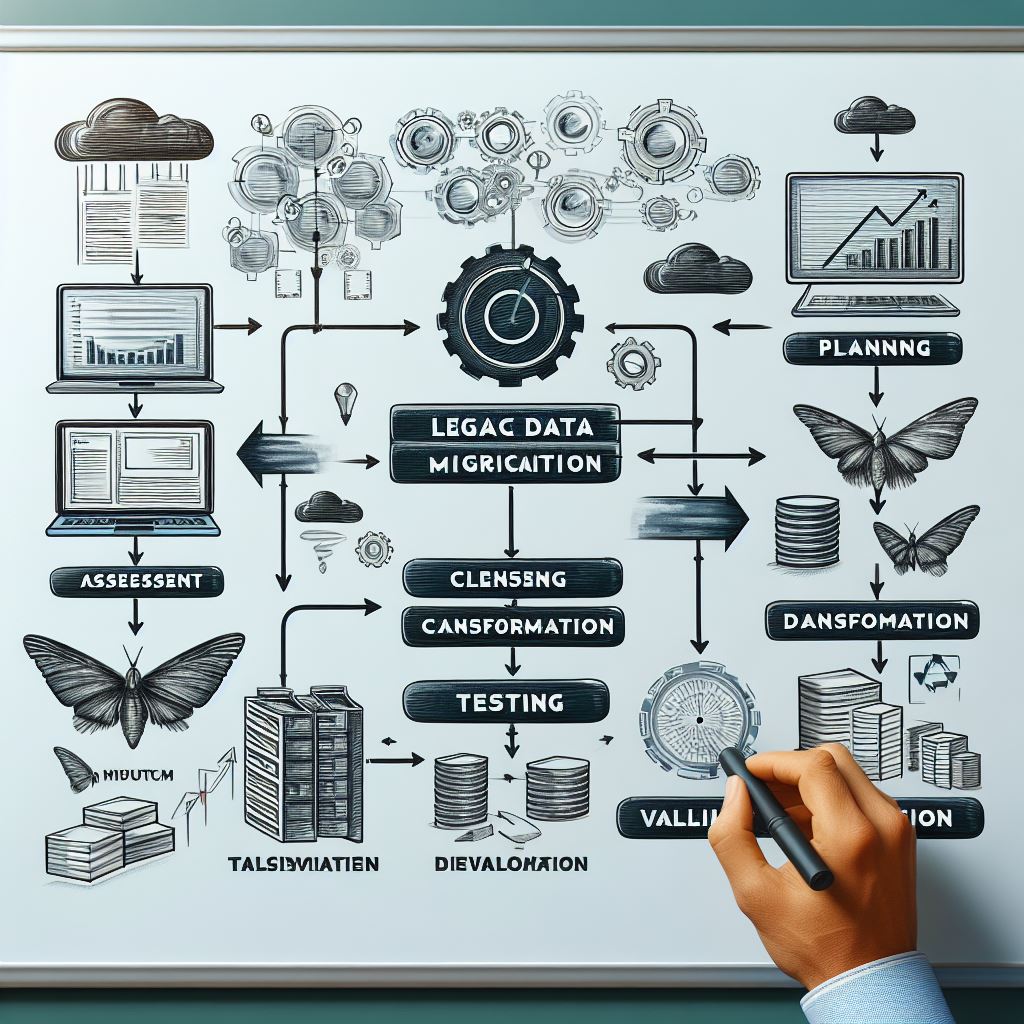Migrating legacy data can be a daunting task, but it is an essential part of modernizing any business. Legacy data refers to the information and data stored in older systems or formats that may be outdated or difficult to access. This data may include customer records, financial information, or even old emails and documents.
In this blog post, we’ll explore what legacy data migration is, why it’s important, and how to complete the process successfully. By the end, you’ll have a better understanding of how to handle your legacy data and ensure a smooth transition to more modern systems. Let’s get started!
Contents
Understanding Legacy Data Migration
Legacy data migration may sound like a tedious and overwhelming process, but it is a crucial step toward modernizing your business and staying ahead of the competition. Think of it as a digital spring cleaning – clearing out the clutter and organizing your data in a more efficient and accessible way. Legacy data refers to the information and records stored in outdated systems or formats, which can hinder the smooth functioning of your business.
By migrating this data to newer and more advanced systems, you can streamline your operations, improve data management, and gain valuable insights. But before jumping into the migration process, it’s essential to assess your legacy data and determine your goals for the migration. This will help you choose the right method and ensure a successful transfer.
And just like any spring cleaning, it’s crucial to test and monitor the process, making adjustments as needed. In the end, legacy data migration may seem like a daunting task, but it is a necessary step for any business looking to thrive in the digital age. So don’t let outdated data hold you back – start planning your migration today and enjoy the benefits of a more organized and efficient data system.

Defining Legacy Data Migration
Legacy data migration is the process of transferring data from old, outdated systems to more modern and efficient ones. It’s a crucial step for businesses looking to stay competitive and streamline their operations. By migrating legacy data, businesses can improve data accessibility and organization and gain valuable insights.
To successfully complete the process, it’s essential to assess the data, determine goals, choose the right migration method, test, train, and monitor the data. Don’t let outdated data hold your business back – start planning your legacy data migration today and reap the benefits of a more streamlined and efficient operation.
Why Legacy Data Migration is Important
Legacy data migration is a crucial process for modernizing a business. It involves transferring data from old systems to new, updated ones. This includes physical records, outdated software, and even old emails.
By migrating legacy data, businesses can improve operations, gain valuable insights, and stay competitive in today’s digital world. The key to successful migration is to assess the data, determine goals, choose the right method, test, train, and monitor. Don’t let outdated data hold your business back – start planning your migration today for a smoother, more efficient future.
The Process: Steps for Successful Legacy Data Migration
Legacy data migration may sound like a daunting and tedious task, but it is a crucial step in modernizing and optimizing your business operations. Think of it as decluttering your digital space and upgrading to a more efficient and organized system. By migrating data from outdated systems and formats, you can unlock valuable insights, streamline processes, and stay competitive in today’s digital age.
To successfully complete the migration process, it’s essential to assess your legacy data, determine your goals, and choose the right migration method. Testing and training your team are also critical steps to ensure a smooth transition. And don’t forget to monitor and make adjustments as needed to maintain the integrity and functionality of your data.
In conclusion, legacy data migration may require some effort and planning, but the benefits are well worth it. Your business will thank you for the improved data management and accessibility, and you’ll have a more efficient and modernized system to work with. Don’t let outdated data hold your business back – embrace the migration process and take your business to the next level.

Assessing Your Legacy Data
Legacy data migration can be a daunting task, but it’s a crucial step for modernizing your business. This process involves transferring data from outdated systems to more modern and accessible formats. By doing so, you can streamline operations, improve data management, and gain valuable insights.
To ensure a successful migration, it’s important to assess your data, determine your goals, choose the right method, and train your team. Don’t let outdated data hold your business back – follow these steps and start reaping the benefits of a modernized data system.
Setting Goals for Migration
Legacy data migration is like cleaning out your closet – it may seem like a daunting task, but it’s necessary for a fresh start. It involves transferring old and outdated data to newer systems for better accessibility and organization. This process is crucial for businesses to stay competitive and gain valuable insights.
To ensure a successful migration, it’s important to assess the data, determine goals, choose the right method, and test and train your team. With these steps in place, your business can say goodbye to outdated data and hello to a more streamlined and efficient system.
Choosing the Right Migration Method
Say goodbye to messy and outdated data with legacy data migration. This process involves transferring data from old systems or formats to newer, more efficient ones. Not only does this improve accessibility and organization, but it also allows for valuable insights to drive business growth.
To successfully migrate your legacy data, assess it thoroughly, determine your goals, choose the right method, and test before full migration. Don’t forget to train your team and monitor for any issues. With these steps, you can modernize your data and take your business to the next level. Say hello to a more streamlined and successful future with legacy data migration.
Testing the Migration
Legacy data migration is the process of transferring outdated data to more modern systems, making it more accessible and usable for businesses. It may seem daunting, but it is a necessary step in today’s digital age. By following these steps – assessing your data, setting goals, choosing the right migration method, testing, training, and monitoring – you can successfully modernize your data and improve your business operations. Don’t let outdated data hold you back – start planning your legacy data migration today and reap the benefits of streamlined processes and valuable insights.
Training Your Team
Say goodbye to outdated data, and hello to a more efficient and organized business! Legacy data migration is the key to modernizing your operations and gaining valuable insights for growth. By assessing your data, setting clear goals, choosing the right migration method, and training your team, you can successfully transfer your legacy data to more modern systems. Don’t let old systems and formats hold you back – follow these steps for a smooth and successful data migration. It’s time to say hello to a more streamlined and successful business.
Monitoring and Adjusting After Migration
Migrating legacy data can be overwhelming, but it’s a crucial step in modernizing your business. Legacy data refers to information stored in outdated systems or formats, hindering accessibility and analysis. To successfully migrate, assess your data, determine goals, and choose the right method.
Testing and training your team is essential before monitoring and adjusting the new system. Legacy data migration streamlines operations improves data management and provides valuable insights for business growth. Don’t let outdated data hold you back – take the leap and start migrating today.
Read Another Post: Migrating MongoDB Migration: A Step-by-Step Guide
Making it Work: Tips for a Successful Legacy Data Migration
Undertaking a legacy data migration can be a daunting task, but it’s a necessary one for any business looking to stay competitive in today’s digital landscape. Legacy data, which refers to information stored in outdated systems or formats, can hinder a company’s growth and efficiency. By modernizing and organizing this data, businesses can unlock valuable insights and streamline their operations.
The process of legacy data migration involves transferring data from old systems or formats to more modern ones. This can include converting paper records to digital formats or upgrading outdated software. But why is it so important? By migrating legacy data, businesses can improve data management, gain valuable insights, and drive growth and success.
To successfully complete a legacy data migration, there are several key steps to follow. First, assess the data you have and determine your goals for the migration. Next, choose the best method for migration and conduct thorough testing before fully transferring the data.
It’s also crucial to train your team on the new system and continue monitoring and adjusting as needed. Don’t let outdated data hold your business back. By following these steps and modernizing your data, you can unlock its true potential and stay ahead in the ever-evolving digital world. So don’t hesitate – start planning your legacy data migration today and set your business up for success.

Utilizing Data Examples
Legacy data migration can seem overwhelming, but it’s a crucial step for modernizing businesses. It involves transferring data from old systems to new ones, making it more accessible and valuable. By assessing your data, setting clear goals, and choosing the right migration method, you can ensure a successful transition.
Don’t forget to test and train your team, and continue to monitor the data after the migration is complete. With the right approach, legacy data migration can streamline operations and unlock valuable insights for your business. So don’t let outdated data hold you back – start planning your migration today!
Considering Data Security and Privacy
Legacy data migration can be a daunting task, but it’s essential for businesses looking to modernize and stay competitive. It involves transferring data from outdated systems to more efficient and accessible ones. The process includes assessing the data, setting goals, choosing the right migration method, testing, and training your team.
By successfully completing this process, businesses can streamline their operations and gain valuable insights. Don’t let old data hold you back – take the necessary steps to migrate your legacy data and pave the way for future success.
Collaborating with IT and Data Experts
Legacy data migration is the process of transferring old and outdated data to new, more modern systems. It’s important for businesses to stay competitive and efficient in today’s digital age. To successfully migrate legacy data, businesses should assess their data, determine their goals, choose the right migration method, test the process, train their team, and monitor for any issues.
This process may seem daunting, but it’s necessary for businesses to streamline operations and gain valuable insights. Don’t let outdated data hold you back – start planning your legacy data migration today.
Frequently Asked Questions [FAQs]
What is the most common method for legacy data migration?
The most common method for legacy data migration is using automated scripts or migration software to transfer data in bulk.
How long does the legacy data migration process typically take?
The timeline for legacy data migration can vary depending on the size and complexity of the data, but it can take anywhere from a few weeks to several months.
How can I ensure the security of my data during the migration process?
It is important to work with a reputable and experienced data migration provider and have proper security measures in place to protect your data during the migration process.
Can I migrate all types of legacy data to modern systems?
In most cases, yes. However, there may be limitations for certain types of data, such as highly sensitive or proprietary information, that require special considerations and precautions during the migration process.
Conclusion
Legacy data may be old and outdated, but its value to a business can be immense. By migrating this data to more modern systems, businesses can unlock new insights and streamline their operations. While the process may seem daunting, by following these steps and taking the necessary time and resources, businesses can complete a legacy data migration and pave the way for future success. Don’t let your legacy data hold you back – embrace the change and unlock its full potential.”





